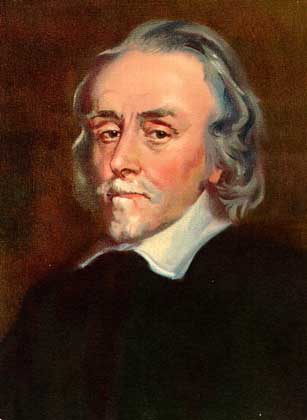- 文章信息
- 作者: kaiwu
- 点击数:865
The servitization in manufacturing may be the most important feature of Industry 4.0
http://kaiwu.city/joomla/index.php/83-job-ai
1.The future of employment
http://kaiwu.city/index.php/job-ai
Frey, C. B., & Osborne, M. A. (2017). The future of employment: How susceptible are jobs to computerisation? Technological Forecasting and Social Change, 114, 254–280.
http://dx.doi.org/10.1016/j.techfore.2016.08.019
https://www.sciencedirect.com/science/article/pii/S0040162516302244
https://www.oxfordmartin.ox.ac.uk/downloads/academic/The_Future_of_Employment.pdf
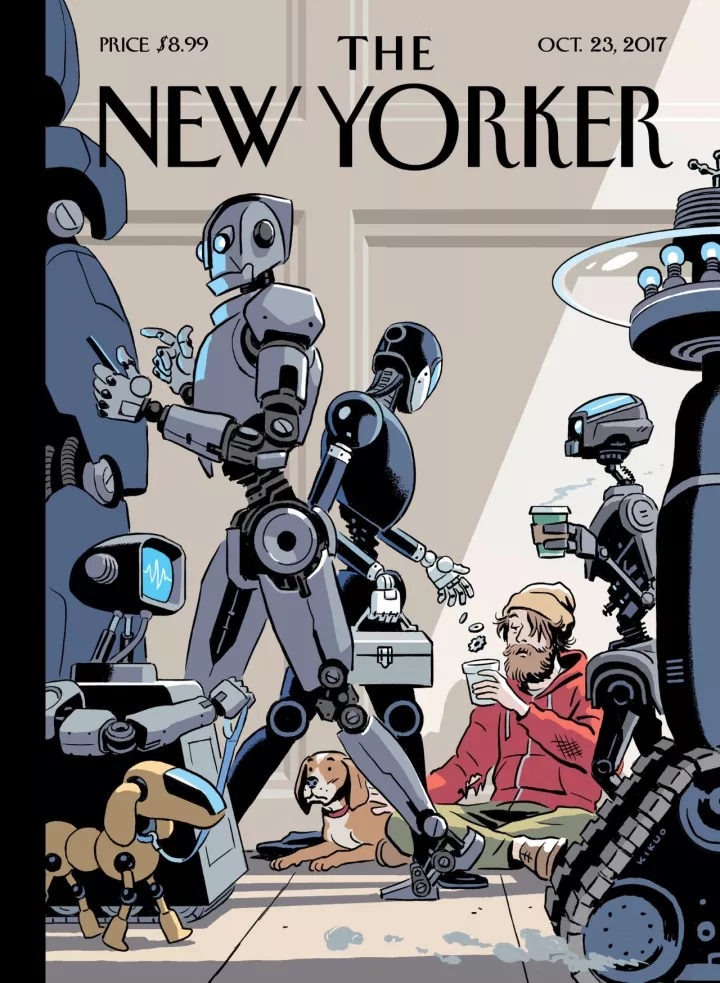
The future of employment
“Tech Support” by R. Kikuo Johnson.
《NewYorker》https://www.newyorker.com/culture/cover-story/cover-story-2017-10-23
https://www.npr.org/sections/money/2015/05/21/408234543/will-your-job-be-done-by-a-machine
2.Robot made of magnetic slime could grab objects inside your body
Wilkins, A. (2022, March 21). Robot Made of Magnetic Slime Could Grab Objects Inside Your Body. New Scientist. https://www.newscientist.com/article/2314395-robot-made-of-magnetic-slime-could-grab-objects-inside-your-body/
3.robot restaurant in Dalian
大连人工智能基地科学餐厅(万达公寓店)
4.Restaurant of the Future 2023 | Food Robots On The Rise
https://www.youtube.com/watch?v=KQkmFZQ-2SA
5.Betop 博涛公司
https://www.betoptech.com/index.html
A.I. teaches itself to drive in Trackmania
https://www.bilibili.com/video/BV1GS4y1Y77r
https://www.youtube.com/watch?v=a8Bo2DHrrow
The inside story of ChatGPT's astonishing potential
https://www.ted.com/talks/greg_brockman_the_inside_story_of_chatgpt_s_astonishing_potential/c
https://www.bilibili.com/video/BV1NM411P7zj/
what is the difference between objective authenticity and existential authenticity in tourism experience?
what is artificial intelligence?
can you summarize the five features of artificial intelligence?
how to transform json file into csv using python?
panda is studying for final exam
https://www.dedao.cn/course/detail?id=v12pOMZN7mbJwgMsbpJDrjxdYaGkoE
NFT Explained In 5 Minutes | What Is NFT?
https://www.youtube.com/watch?v=NNQLJcJEzv0
NFT Explained In 4 Minutes
https://www.bilibili.com/video/BV1SB4y1e79W/
Rashideh, W. (2020). Blockchain technology framework: Current and future perspectives for the tourism industry. Tourism Management, 80, 104125. https://doi.org/10.1016/j.tourman.2020.104125
Flecha-Barrio, M. D., Palomo, J., Figueroa-Domecq, C., & Segovia-Perez, M. (2020). Blockchain Implementation in Hotel Management. In J. Neidhardt & W. Wörndl , Information and Communication Technologies in Tourism 2020 (pp. 255–266). Springer International Publishing. https://doi.org/10.1007/978-3-030-36737-4_21
The Metaverse and How We'll Build It Together -- Connect 2021
https://www.youtube.com/watch?v=Uvufun6xer8
https://www.bilibili.com/video/BV1qb4y1q77u
https://www.wired.com/story/what-is-the-metaverse/
https://news.berkeley.edu/2020/05/16/watch-blockeley-uc-berkeleys-online-minecraft-commencement/
https://artsandculture.google.com/
https://artsandculture.google.com/story/WgUx5YGDnc6MzQ
https://artsandculture.google.com/asset/the-starry-night-vincent-van-gogh/bgEuwDxel93-Pg
http://tour.quanjingke.com/xiangmu/songdugucheng/5qingmingshangheyuan/tour.html
Gursoy, D., Malodia, S., & Dhir, A. (2022). The Metaverse in the Hospitality and Tourism Industry: An Overview of Current Trends and Future Research Directions. Journal of Hospitality Marketing & Management, 0(0), 1–8. https://doi.org/10.1080/19368623.2022.2072504
Han, D.-I. D., Bergs, Y., & Moorhouse, N. (2022). Virtual Reality Consumer Experience Escapes: Preparing for the Metaverse. Virtual Reality. https://doi.org/10.1007/s10055-022-00641-7
Kozinets, R. V. (2022). Immersive Netnography: A Novel Method for Service Experience Research in Virtual Reality, Augmented Reality and Metaverse Contexts. Journal of Service Management,. https://doi.org/10.1108/JOSM-12-2021-0481
- 文章信息
- 作者: kaiwu
- 点击数:924
https://mp.weixin.qq.com/s/BXou7IVHkPBztfjFOIJMSQ






Institute for Dark Tourism Research (iDTR). University of Central Lancashire. Retrieved April 11, 2023, from https://www.uclan.ac.uk/research/activity/dark-tourism
You and Yours—Digital wallets, dark tourism, and tackling insurance fraud—BBC Sounds. (n.d.). Retrieved April 11, 2023, from https://www.bbc.co.uk/sounds/play/b01gvvxp
- Allman, H. R. (2017). Motivations and Intentions of Tourists to Visit Dark Tourism Locations [Doctoral dissertation, Iowa State University]. In ProQuest Dissertations and Theses. https://www.proquest.com/docview/1918165601/abstract/2FF6072A15854BD4PQ/11
- Biran, A., & Hyde, K. F. (2013). New Perspectives on Dark Tourism. International Journal of Culture, Tourism and Hospitality Research, 7(3), 191–198. https://doi.org/10.1108/IJCTHR-05-2013-0032
- Campbell-Firkus, D. D. (2021). The Stories We Tell: Expanding Conceptions of Dark Tourism and Cultural Identity in America [Master’s thesis, Middle Tennessee State University]. In ProQuest Dissertations and Theses. https://jewlscholar.mtsu.edu/items/49119caa-bf49-49e2-bcfa-d9ef1b2a3a8b/full
- Dresler, E. (2023). Multiplicity of Moral Emotions in Educational Dark Tourism. Tourism Management Perspectives, 46, 101094. https://doi.org/10.1016/j.tmp.2023.101094
- Filep, S., Laing, J., & Csikszentmihalyi, M. (2019). Positive tourism. Routledge.
- Frew, E. (Ed.). (2016). Dark Tourism and Place Identity: Managing and Interpreting Dark Places. Routledge. https://www.taylorfrancis.com/books/edit/10.4324/9780203134900/dark-tourism-place-identity-leanne-white-elspeth-frew
- Hohenhaus, P. (2021). Atlas of Dark Destinations: Explore the World of Dark Tourism. Laurence King Publishing.
- Kerr, M. M. (Ed.). (2022). Children, Young People and Dark Tourism. Routledge.
- Lennon, J. (2017). Dark Tourism. In J. Lennon, Oxford Research Encyclopedia of Criminology and Criminal Justice. Oxford University Press. https://doi.org/10.1093/acrefore/9780190264079.013.212
- Lennon, J. J., & Foley, M. (2000). Dark Tourism. Continuum.
- Light, D. (2017). Progress in Dark Tourism and Thanatourism Research: An Uneasy Relationship with Heritage Tourism. Tourism Management, 61, 275–301. https://doi.org/10.1016/j.tourman.2017.01.011
- Luna-Cortés, G., López-Bonilla, L. M., & López-Bonilla, J. M. (2022). The Consumption of Dark Narratives: A Systematic Review and Research Agenda. Journal of Business Research, 145, 524–534. https://doi.org/10.1016/j.jbusres.2022.03.013
- Lv, X., Lu, R., Xu, S., Sun, J., & Yang, Y. (2022). Exploring Visual Embodiment Effect in Dark Tourism: The Influence of Visual Darkness on Dark Experience. Tourism Management, 89, 104438. https://doi.org/10.1016/j.tourman.2021.104438
- Lv, X., Luo, H., Xu, S., Sun, J., Lu, R., & Hu, Y. (2022). Dark Tourism Spectrum: Visual Expression of Dark Experience. Tourism Management, 93, 104580. https://doi.org/10.1016/j.tourman.2022.104580
- MacAmhalai, M. (2009). The Dialectics of Dark Tourism [Doctoral dissertation, University of Ulster (United Kingdom)]. In PQDT - UK & Ireland. https://ethos.bl.uk/OrderDetails.do?uin=uk.bl.ethos.510462
- Magano, J., Fraiz-Brea, J. A., & Ângela Leite. (2023). Dark Tourism, the Holocaust, and Well-Being: A Systematic Review. Heliyon, 9(1), e13064. https://doi.org/10.1016/j.heliyon.2023.e13064
- Martini, A., & Buda, D. M. (2020). Dark Tourism and Affect: Framing Places of Death and Disaster. Current Issues in Tourism, 23(6), 679–692. https://doi.org/10.1080/13683500.2018.1518972
- McDaniel, K. N. (Ed.). (2018). Virtual Dark Tourism: Ghost Roads. Palgrave Macmillan. https://doi.org/10.1007/978-3-319-74687-6
- Mitchell, V., Henthorne, T. L., & George, B. (2020). Making Sense of Dark Tourism: Typologies, Motivations and Future Development of Theory. In M. E. Korstanje & H. Seraphin, Tourism, Terrorism and Security (pp. 103–114). Emerald Publishing Limited. https://doi.org/10.1108/978-1-83867-905-720201007
- Olsen, D. H., & C.A.B. International (2019). Dark Tourism and Pilgrimage. CABI.
- Pastor, D. (2023). Tourism and Memory: Visitor Experiences of the Nazi and Gdr Past . Routledge.
- Poade, D. M. (2017). The Business of “Dark Tourism”: The Management of “Dark Tourism” Visitor Sites and Attractions, with Special Reference to Innovation [Doctoral dissertation, University of Exeter (United Kingdom)]. In PQDT - UK & Ireland. https://ore.exeter.ac.uk/repository/handle/10871/28820
- Sawyer, H. E. (2018). I Am The Dark Tourist: Travels to the Darkest Sites on Earth. Headpress.
- Sirisena, H. (2021). Dark Tourist: Essays. Mad Creek Books.
- Stone, P. (2013). Dark Tourism Scholarship: A Critical Review. International Journal of Culture, Tourism and Hospitality Research, 7(3), 307–318. https://doi.org/10.1108/IJCTHR-06-2013-0039
- Stone, P. R. (2011). Death, Dying and Dark Tourism in Contemporary Society: A Theoretical and Empirical Analysis [Doctoral dissertation, University of Central Lancashire (United Kingdom)]. In PQDT - UK & Ireland. https://clok.uclan.ac.uk/1870/1/StonePPhD_thesis_final.pdf
- Stone, P. R., Hartmann, R., Seaton, A. V., Sharpley, R., & White, L. (2018). The Palgrave Handbook of Dark Tourism Studies. Palgrave Macmillan. https://link.springer.com/book/10.1057/978-1-137-47566-4
- Stone, P., & Sharpley, R. (2008). Consuming Dark Tourism: A Thanatological Perspective. Annals of Tourism Research, 35(2), 574–595. https://doi.org/10.1016/j.annals.2008.02.003
-
Stone, P. R. (2006). A Dark Tourism Spectrum: Towards a Typology of Death and Macabre Related Tourist Sites, Attractions and Exhibitions. Tourism: An International Interdisciplinary Journal, 54(2), 145–160.
-
Stone, P. R. (2012). Dark Tourism and Significant Other Death: Towards a Model of Mortality Mediation. Annals of Tourism Research, 39(3), 1565–1587. https://doi.org/10.1016/j.annals.2012.04.007
-
Storey, A., Nurse, A., Sergi, A., Lloyd, A., Colliver, B., Ancrum, C., Rusu, D., Wilson, D., Yates, D., Frankis, D. J., Carrabine, E., Smith, E., Winlow, E., Buck-Matthews, E., Potter, G., Gallacher, G., London, H., Cook, I. R., Richards, J., … Laverick, W. (2023). 50 Dark Destinations: Crime and Contemporary Tourism. Policy Press.
- Šuligoj, M., & Kennell, J. (2022). The Role of Dark Commemorative and Sport Events in Peaceful Coexistence in the Western Balkans. Journal of Sustainable Tourism, 30(2–3), 408–426. https://doi.org/10.1080/09669582.2021.1938090
- Thapa Magar, A. (2018). Enlightening Dark Tourism in Nepal [Master’s thesis, University of North Texas]. In ProQuest Dissertations and Theses. https://www.proquest.com/docview/2191733971/abstract/2FF6072A15854BD4PQ/3
-
Tzanelli, R. (2018). Schematising Hospitality: Ai Weiwei’s Activist Artwork as a Form of Dark Travel. Mobilities, 13(4), 520–534. https://doi.org/10.1080/17450101.2017.1411817
- Wang, J., Chang, M., Luo, X., Qiu, R., & Zou, T. (2023). How Perceived Authenticity Affects Tourist Satisfaction and Behavioral Intention Towards Natural Disaster Memorials: A Mediation Analysis. Tourism Management Perspectives, 46, 101085. https://doi.org/10.1016/j.tmp.2023.101085
- Willis, E. (2014). Theatricality, Dark Tourism and Ethical Spectatorship: Absent Others. Palgrave Macmillan UK. http://gen.lib.rus.ec/book/index.php?md5=2cd30fd56c14a530cc0c3a37728345a3
- Wyatt, B., Leask, A., & Barron, P. (2021). Designing Dark Tourism Experiences: An Exploration of Edutainment Interpretation at Lighter Dark Visitor Attractions. Journal of Heritage Tourism, 16(4), 433–449. https://doi.org/10.1080/1743873X.2020.1858087
- Wyatt, B., Leask, A., & Barron, P. (2023). Re-Enactment in Lighter Dark Tourism: An Exploration of Re-Enactor Tour Guides and Their Perspectives on Creating Visitor Experiences. Journal of Travel Research, 00472875221151074. https://doi.org/10.1177/00472875221151074
- Yan, B.-J., Zhang, J., Zhang, H.-L., Lu, S.-J., & Guo, Y.-R. (2016). Investigating the Motivation–Experience Relationship in a Dark Tourism Space: A Case Study of the Beichuan Earthquake Relics, China. Tourism Management, 53, 108–121. https://doi.org/10.1016/j.tourman.2015.09.014
- Zhang, Y. (2022). Experiencing Human Identity at Dark Tourism Sites of Natural Disasters. Tourism Management, 89, 104451. https://doi.org/10.1016/j.tourman.2021.104451
- 周永博. (2020). 黑色叙事对旅游目的地引致形象的影响机制. 旅游学刊, 35(2), 65–79. https://doi.org/10.19765/j.cnki.1002-5006.2020.02.010
- 孙佼佼. (2018). 黑色旅游体验的心理机制与目的地的意义再表征 [博士, 东北财经大学]. https://kns.cnki.net/kcms2/article/abstract?v=3uoqIhG8C447WN1SO36whLpCgh0R0Z-iDdIt-WSAdV5IJ_Uy2HKRAbgS6zJ0wMCTJ4muPbQP-xXdExlKluCzZVT-mZYBMSaV&uniplatform=NZKPT
- 李经龙、蒋韶檀. (2022). 中国黑色旅游研究进展——基于CiteSpace的文献计量分析. 旅游导刊, 6(6), 76–96.
- 王金伟、张赛茵. (2016). 灾害纪念地的黑色旅游者:动机、类型化及其差异——以北川地震遗址区为例. 地理研究, 35(8), 1576–1588.
- 王金伟, 杨佳旭, 郑春晖, & 王琛琛. (2019). 黑色旅游地游客动机对目的地形象的影响研究——以北川地震遗址区为例. 旅游学刊, 34(9), 114–126. https://doi.org/10.19765/j.cnki.1002-5006.2019.09.015
- 王金伟、段冰杰. (2021). Dark Tourism学术研究:进展与展望. 旅游科学, 35(5), 81–103. https://doi.org/10.16323/j.cnki.lykx.2021.05.006
- 谢伶、王金伟、吕杰华. (2019). 国际黑色旅游研究的知识图谱——基于CiteSpace的计量分析. 资源科学, 41(3), 454–466.
- 谢彦君、孙佼佼. (2016). 黑色旅游的愉悦情感与美丑双重体验. 财经问题研究, 3, 116–122.
- 谢彦君、 孙佼佼、卫银栋. (2015). 论黑色旅游的愉悦性:一种体验视角下的死亡观照. 旅游学刊, 30(3), 86–94.
- 鲁瑞华. (2022). 见墨者黑?视觉“黑”对黑色旅游体验的影响研究 [硕士, 西南财经大学]. https://doi.org/10.27412/d.cnki.gxncu.2022.001683
- 文章信息
- 作者: kaiwu
- 点击数:1149

O’Reilly出版社的head first(深入浅出)系列书籍以特殊的方式排版,整合大量的图片和有趣的内容,提供符合直觉的理解方式,让学习自然而有趣,有利于客服恐惧心理和畏难情绪,非常适合初学者使用,。
https://book.douban.com/series/10044
head first书系(55本)
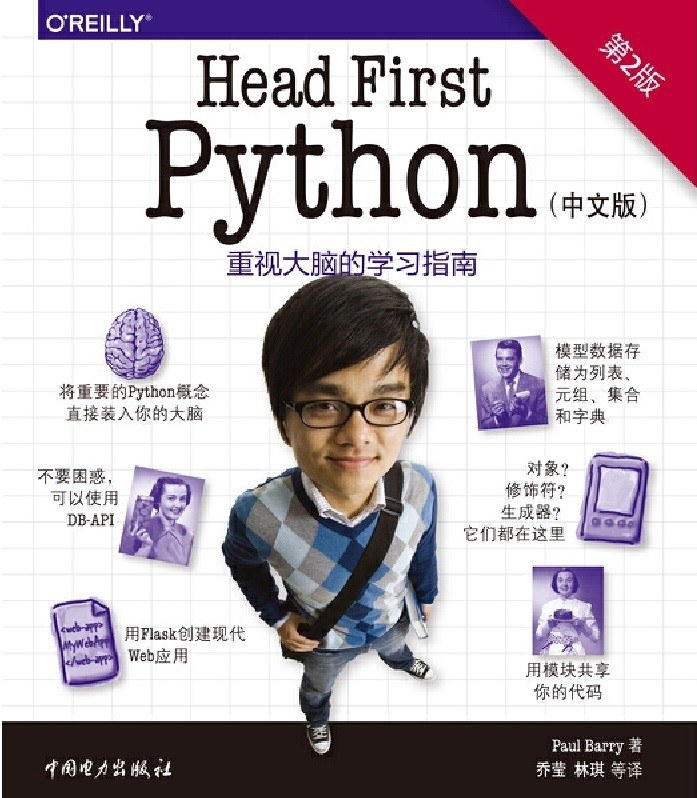
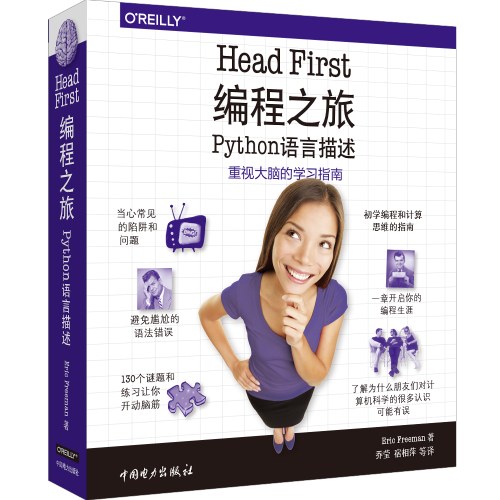
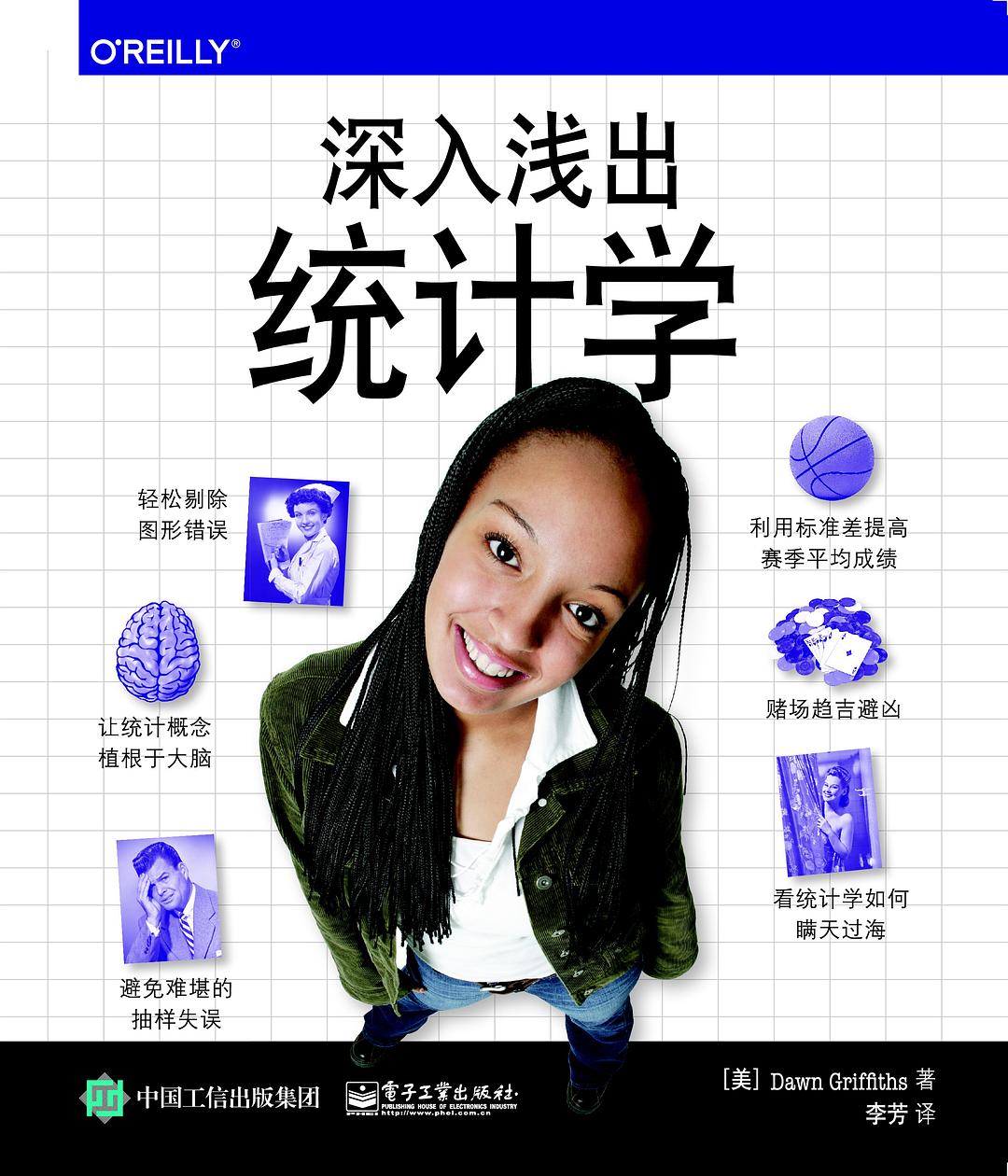
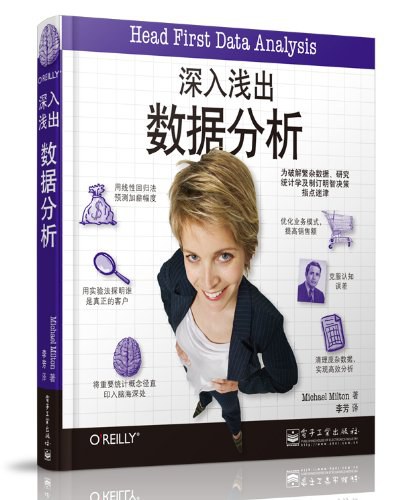
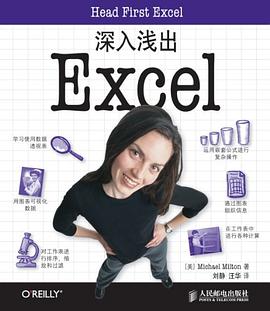
https://wiki.alquds.edu/?query=Head_First_(book_series)
Head First is a series of introductory instructional books to many topics, published by O'Reilly Media. It stresses an unorthodox, visually intensive, reader-involving combination of puzzles, jokes, nonstandard design and layout, and an engaging, conversational style to immerse the reader in a given topic.
Originally, the series covered programming and software engineering, but is now expanding to other topics in science, mathematics and business, due to success. The series was created by Bert Bates and Kathy Sierra, and began with Head First Java in 2003.
https://www.thriftbooks.com/series/head-first-series/37364
https://www.amazon.com/b?node=15123901011
https://book.douban.com/series/4033
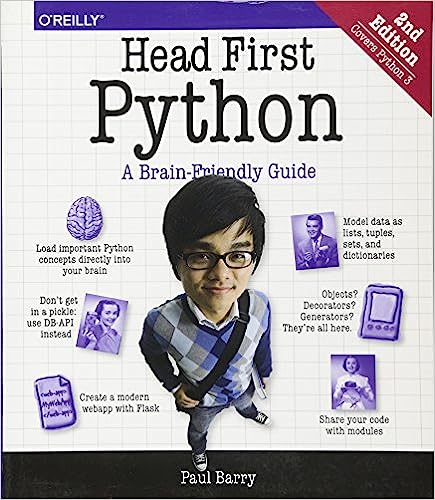
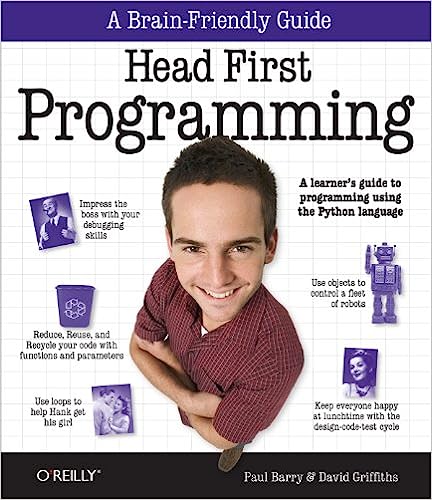
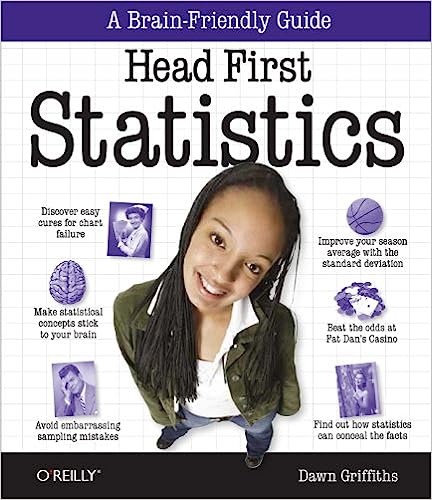

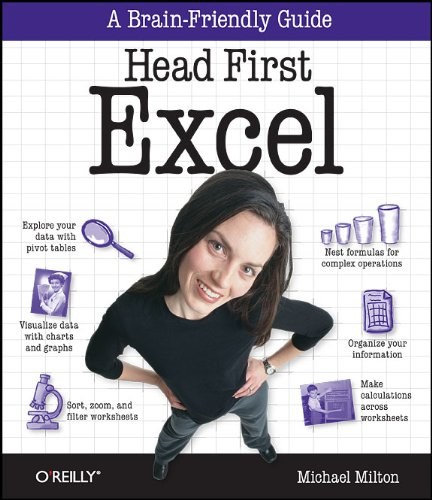
- 文章信息
- 作者: kaiwu
- 点击数:676
听了得到app,吴军.科技科技史纲60讲 23 | 牛顿“牛”在哪?
https://www.dedao.cn/course/article?id=WqavDm012GolV7pa0JxPjEy8zdk73Q
这里我们先说说牛顿在科学上的主要贡献,我将它们总结为这样几方面:
- 在数学上发现二项式定理,与莱布尼茨分别独立发明微积分;
- 在物理学上,奠定了经典力学的基础,定义了许多物理量,提出了力学三定律和万有引力定律;
- 在光学上,提出了光的粒子说,发现了光谱,发明了牛顿望远镜;
- 在天文学上,利用经典力学和微积分,构建了当时最准确的天体运动模型;
- 在化学上,通过对炼金术的研究,提出了原子论的原型,以及朴素的物质不灭定律的构想。
当然,牛顿最了不起的不在于发现了那么多的知识点,而在于构建起很多庞大的学科体系。我们在介绍牛津大学第一任校长格罗斯泰斯特的贡献时讲过,这位杰出的教育家对大学贡献的关键在于他让高等教育变得具有系统性了。因此,能够建立起系统性学科的人当然非常牛。
在物理学上,牛顿之前的人类虽然也掌握了很多力学和光学知识,但都是零星的知识点,经验的总结,不成体系,有些结论甚至和非科学的没有什么区别,是牛顿完成了它们科学化的过程。建立一个学科体系,首要的任务则是定义清楚各种基本的概念。
在牛顿之前,那些最基本的物理学概念,包括质量和力,都没有清晰的定义,甚至是相混淆的,比如人们搞不清楚力、惯性和动能的区别,质量和重量的区别,速度和加速度的区别。这些概念可能你在中学时也区分了很久才搞清楚,更不要说几百年前的人了。
牛顿定义了经典物理学中的这些最基本的概念,然后在此基础上,才提出了力学三定律,进而搭建起整个物理学的大厦。牛顿的工作重现了当年欧几里得构建公理化几何学的过程,再次向世人展示了构建一个学科体系的方法。在牛顿之后,各门自然科学都开始从知识点向体系化发展了。
在牛顿之前,几乎所有的科学发现都需要先观察到现象,才能发现规律,在牛顿之后,很多发现则是先通过理论的推导,预测可能观察到的结果,然后再通过实验证实。
牛顿的贡献还不止于此,他在思想领域最大的成就是将数学、物理学和天文学三个原本孤立的知识体系,通过物质的机械运动统一起来。因此,牛顿和当时其他科学家们一起,确立了一种新的世界观,就是机械论。
诗人亚历山大·波普在拜谒牛顿墓时写下了这样一句著名的诗句,“自然和自然律隐没在黑暗中;神说,让牛顿去吧!万物遂成光明”。这其实就反映出人类在牛顿之前和之后对世界态度的变化,在那之后,人类不再觉得自己身处不可知的黑暗了。
从历史的必然性来看,牛顿的出现不是偶然的,与他同时代的英国出现了一大批顶级科学家,包括胡克(弹性定律的提出者)、哈雷、波义耳和惠更斯(生活在英国的荷兰人,牛顿选定的继承人)等人。哈雷和胡克等人其实也注意到了行星围绕太阳运动需要一种向心力,即来自太阳的引力,只是这些人没有能力完成理论的建立罢了。不过,如果没有牛顿,可能用不了多久,也会有科学家发现万有引力定律。事实上,哈雷参与了牛顿《原理》一书的出版,并且是该书第一版的出资人。这些事实说明了科技发展的必然性。
从历史的偶然性来看,牛顿非常幸运,用法国大数学家拉格朗日的话讲,“牛顿是那么地幸运,因为发现并建立一个宇宙系统的机会只能有一次”。因此牛顿可以讲是生逢其时。在牛顿之后,世界上还有很多伟大的科学家出现,但是以一己之力构建多门学科大厦的机会不会再有了。
以下是本站补充的图片及网址连接。
艾萨克·牛顿(Isaac Newton)
https://baike.baidu.com/item/%E8%89%BE%E8%90%A8%E5%85%8B%C2%B7%E7%89%9B%E9%A1%BF
https://plato.stanford.edu/entries/newton/
https://www.britannica.com/summary/Isaac-Newton
https://www.history.com/topics/inventions/isaac-newton
https://thefactfile.org/isaac-newton-facts/

图片来自https://bkimg.cdn.bcebos.com/pic/e61190ef76c6a7ef52c37f61f3faaf51f2de6694
https://www.ideaedu.org/idea-notes-on-learning/gaining-a-basic-understanding-of-the-subject/
The foundations of any discipline are its definition, knowledge base, terminology, structure, methodology, and epistemology. As we move from basic knowledge to the complex organization and hierarchies of information in the disciplines, we parallel the levels of Bloom’s cognitive taxonomy (1): knowledge, comprehension, application, analysis, synthesis, and evaluation.
- Frohlich, M. (2001). Spiritual Discipline, Discipline of Spirituality: Revisiting Questions of Definition and Method. Spiritus: A Journal of Christian Spirituality, 1(1), 65–78.
- Heggart, K. (2016, May 1). How Important is Subject Matter Knowledge for a Teacher? Edutopia. https://www.edutopia.org/discussion/how-important-subject-matter-knowledge-teacher
- Schilt, C. J. (2020). Created in Our Image: How Isaac Newton Was Fashioned as a Scientist and Forgotten as a Scholar. History of Humanities, 5(1), 75–95. https://doi.org/10.1086/707693
- Theall, M., Wager, W., & Svinicki, M. (2016, October 18). Gaining A Basic Understanding of the Subject | IDEA. https://www.ideaedu.org/idea/idea-notes-on-learning/gaining-a-basic-understanding-of-the-subject/
听了得到app,吴军.科技科技史纲60讲 24 | 现代化学:如何从炼金术演化而来
https://www.dedao.cn/course/article?id=89GEyP73eprvKB0LMJq2Mb0kRD64dl
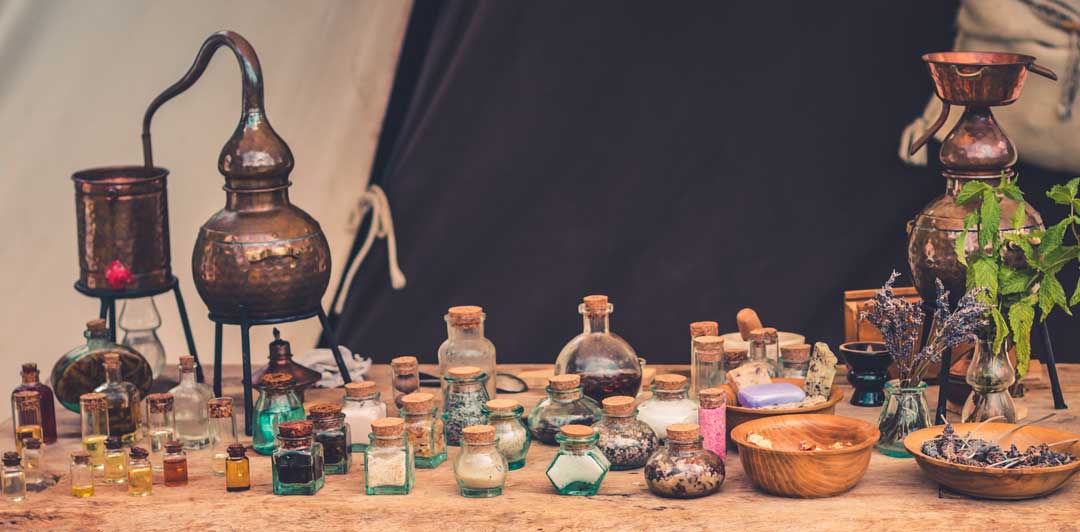
最早从炼金术士转变为化学家的,要算德国商人波兰特了。1669年,他试图从人体的尿液中提取出黄金,这可能因为它们都是黄色的缘故,于是抱着发财的目的,用尿液做了大量实验,结果意外地发现了白磷。其他的炼金术士们听到这个消息后百般打探消息,但是波兰特的保密工作做得很好,在接下来的好几年里大家对提炼磷的细节过程毫无知晓。要知道,当时很多炼金师们为了保护自己的配方,甚至会用密码来书写。
后来德国科学家孔克尔多方打听,探知这种发磷光的物质是从尿液中提取出来的,于是他也开始做类似的实验,并且在1678年成功地提取出白磷。几乎同时,英国的科学家波义耳也用相近的方法制作出了磷。
这个提取磷的方法就传播开来了,后来,波义耳的学生通过制作白磷发了财。磷的发现,标志着从炼金术到化学的第一个转折,因为不同的人用类似的方法得到了同样的结果,从此让一个新物质的发明过程变得可以验证,这一点很重要。
在从炼金术到化学过渡的这个过程中,起了最大作用的是著名科学家安托万·拉瓦锡,他在化学界的地位堪比牛顿在物理学的地位。拉瓦锡是法国末代王朝的贵族,从来不缺钱,他做化学实验只是为了探索自然的奥秘,而不是为了赚钱。拉瓦锡一生的贡献很多,最大的贡献是以下四个:
1.确认氧是一种化学元素(oxygen一词就是拉瓦锡创造的),并且提出了氧气助燃的学说;
2.证实并确立了质量守恒定律;
3.联合其他科学家制定了今天使用的化学物质的命名法;
4.制定今天广泛使用的公制度量衡。这里面任何一项都足以让人名垂青史,相比结果,他取得每一项成就的过程,对科学的发展都更为重要。
在拉瓦锡之前,学术界普遍认为一些物质能够燃烧,是因为其中具有所谓的“燃素”,燃烧的过程就是物质释放燃素的过程。但是人们还发现,给炉子鼓风火就能烧得更旺,把油灯的罩子盖严灯就会灭,当时的人们感觉没空气不行,但并不知道是空气中的氧气在助燃。
最早发现氧气能够助燃的其实是英国科学家普利斯特里。1774年,他在加热氧化汞时,得到一种气体,这种气体不仅能使火焰燃烧得更明亮,还能帮助呼吸。遗憾的是,燃素学说在普利斯特里脑子里根深蒂固,因此他没有得出有用的结论。后来普利斯特里到了法国,向拉瓦锡介绍了自己的实验,拉瓦锡重复了他的实验,得到了相同的结果。
但是拉瓦锡不相信燃素说的解释,因为他通过定量分析和逻辑推理发现了燃素说的逻辑破绽:如果燃烧是因为物质中的燃素造成的,那么燃烧之后,灰烬的质量应该减少,而事实上,燃烧的生成物的质量是增加的,这说明一定有新的东西加入到了燃烧的产物中。
拉瓦锡在实验中有一个信条:“必须用天平进行精确测定来确定真理。”正是依靠严格测量反应物前后的质量,他才确认了在燃烧的过程中,空气中的一种气体加入了进来,而不是所谓燃素分解掉了。此外这件事再次说明,逻辑推理对于科研很重要。
拉瓦锡所有的研究工作,都遵循一种科学的方法,这种方法由笛卡尔概括成四个步骤:
1理性批判:不接受任何自己不清楚的真理。对一个命题要根据自己的判断,确定有无可疑之处,任何有可疑之处的命题都不会是真理。
2化繁为简,化整为零:对于复杂的问题,尽量分解为多个简单的小问题来研究,一个一个地分开解决。
3先易后难:在解决上述小问题时,应该按照先易后难的次序,逐步解决。
4归纳综合:解决每个小问题之后,再综合起来。看看是否彻底解决了原来的问题。
安托万-洛朗·拉瓦锡(Antoine-Laurent de Lavoisier)
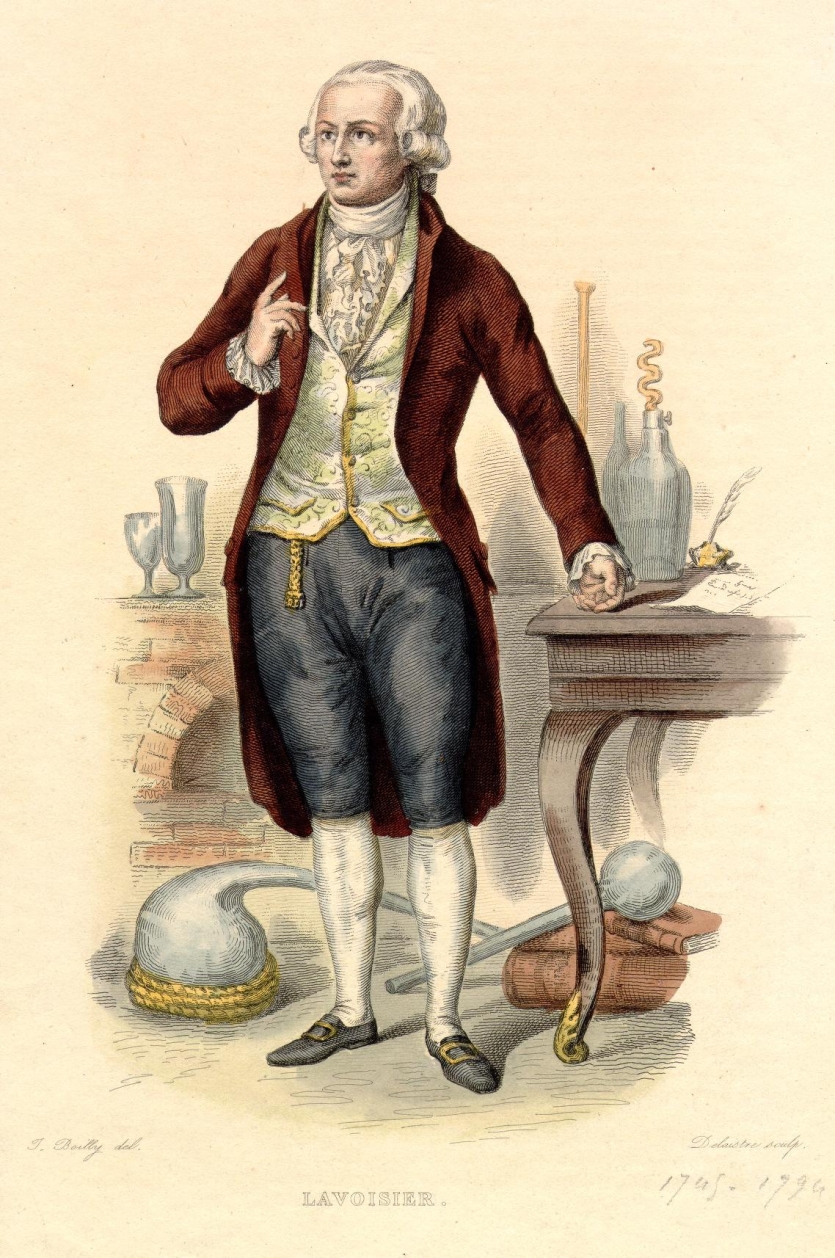
https://www.britannica.com/biography/Antoine-Lavoisier
https://www.sciencehistory.org/historical-profile/antoine-laurent-lavoisier
https://www.acs.org/education/whatischemistry/landmarks/lavoisier.html
https://id.wikipedia.org/wiki/Antoine_Lavoisier
- 文章信息
- 作者: kaiwu
- 点击数:689
听了得到app,吴军.科技科技史纲60讲 22 | 现代医学:如何从非科学到科学
https://www.dedao.cn/course/article?id=2m845Ln7q69yKOZvdXrkebvGDYjglp
很多人喜欢把医学分为西医和中医,其实这种分法不是很准确,因为医学其实没有国界之分。更准确地分类应该是现代医学和传统医学。今天如果到西班牙马德里皇宫的医务室看一看,就会发现它几乎就是一个中药铺子,只不过一格格的抽屉换成了一个个玻璃的储药罐,里面尽是草药和矿物质,一个个熬汤药的瓦罐换成了一个个玻璃的烧瓶。在近代之前的欧洲,医学的方法和中国传统医学没有多大的不同。
欧洲一直沿用古希腊的医学家盖伦(Galen of Pergamon,129-199)的医学理论。虽然盖伦也做解剖研究,但是他的解剖对象是狗、是牛,而不是人,所以即便他发现了神经以及脊椎的作用,但是对绝大多数人体器官的功能还是搞不清楚。盖伦的理论认为,生命来源于“气”。... ... 心中有“活气”(Pneuma zoticon),控制体内的血液和体温,... ...对于血液的作用,盖伦认为是从心脏输出到身体各个部分,而不是循环的。也正是因为如此,盖伦并不认为人体的血液量是有限的,因此还发明了放血疗法,这种谬误要了很多人的命。
哈维(Willian Harvay)就不一样了。血液循环原理,其实是他从逻辑推理出发而得到的,他首先通过解剖学得知心脏的大小,并且大致推算出心脏每次搏动压出的血量,然后他根据正常人的心跳的速率,进一步推算出人的心脏一小时要泵出约500磅的血浆。如果血液不是循环的,人体内怎么可能有这么多的血液呢。根据这个矛盾,他彻底摒弃了盖伦的理论,提出了血液循环的猜想,并发现新理论是契合实验结果的。
不仅如此,哈维最后还通过长达九年的实验验证了他的理论。事实上,哈维直到去世前,一直都在通过实验来收集足够的证据,证明自己的理论,以保证对盖伦的批判是公正的。如果我们回想一下上一讲所讲的伽利略的工作是掌握确定的信息,确立哥白尼提出的日心说,哈维的工作在这个意义上也是类似的,只不过和伽利略不同,提出理论的和验证理论的人都是哈维本人。经过他多年的努力,一套关于人体的全新理论终于建立起来了。
哈维写道:“无论是教解剖学或是学解剖学,都应以实验为依据,而不应以书籍为依据,都应以自然为师,而不应以哲学为师。”哈维的成就一开始在天主教势力强大的法国遭到反对,后来由于笛卡尔的支持,才被大众所接受。笛卡尔比哈维小十几岁,一直对这位近代科学的先驱敬重有加。
关于科学的方法,笛卡尔做了很好的总结,大致是这样几步:
- 先提出问题,但不要有预先设定的结论;
- 进行实验;
- 从实验中得到结论和解释;这一点很重要,结论是实验得到的,而不是头脑里固有的。
- 将结论推广并且普遍化;
- 在实践中找出新的问题,如此循环往复。
笛卡尔有一句名言,“大胆假设,小心求证”,这并不是让大家有一个古怪的想法,然后钻牛角尖去证实那种并不正确的想法,而是说在实验之前,什么想法都可以有,什么结果都是可能的,要有开放的心态,然后通过小心求证,找到真理。如果我们对比哈维和他的老师法布里修斯的工作,就会发现后者失败的主要原因,是脑子里存在一个固有的,来自先哲盖伦的想法,他老师的工作都是试图解释盖伦的想法。而哈维头脑里并没有预先的假设,心态是开放的,准备接受任何结论。
以下是本站补充的图片及网址连接。
royal pharmacy西班牙马德里皇宫的医务室
https://www.discoverwalks.com/blog/madrid/things-to-know-about-el-palacio-real-in-madrid/


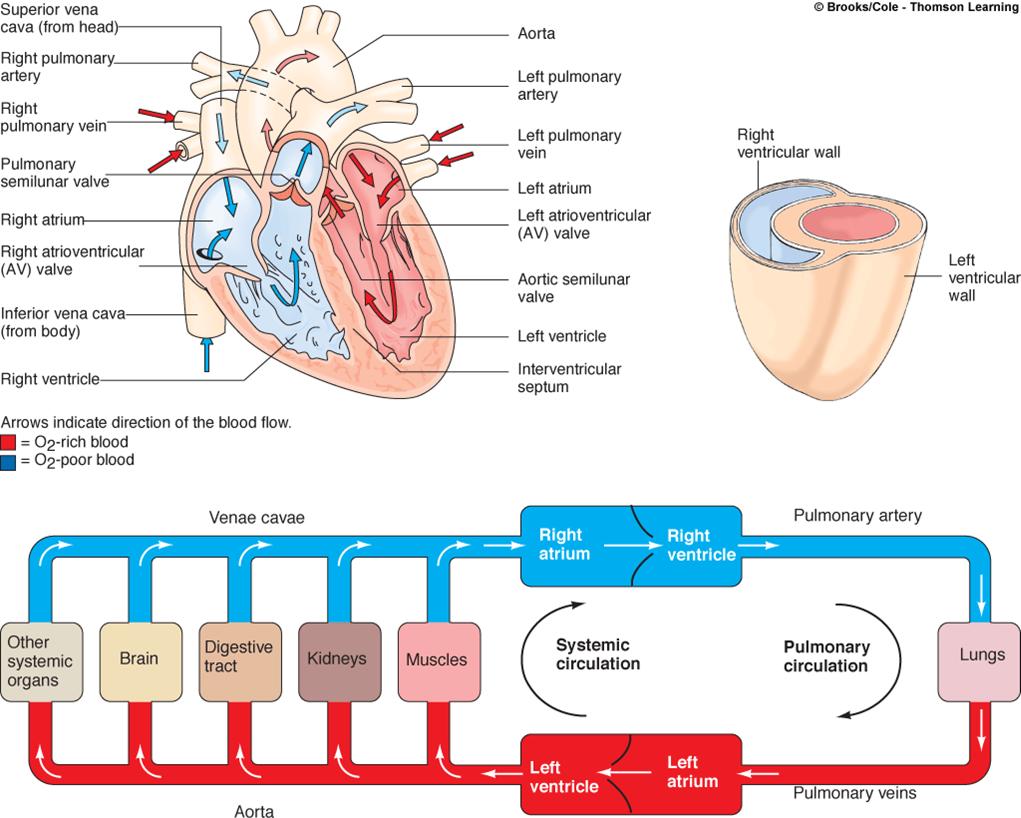
- Androutsos, G., Karamanou, M., & Stefanadis, C. (2012). William Harvey (1578-1657): Discoverer of Blood Circulation. Hellenic Journal of Cardiology: Hjc = Hellenike Kardiologike Epitheorese, 53(1), 6–9. https://www.hellenicjcardiol.org/archive/full_text/2012/1/2012_1_6.pdf
- Ribatti, D. (2009). William Harvey and the Discovery of the Circulation of the Blood. Journal of Angiogenesis Research, 1(1), 3. https://doi.org/10.1186/2040-2384-1-3
- Schultz, S. G. (2002). William Harvey and the Circulation of the Blood: The Birth of a Scientific Revolution and Modern Physiology. Physiology, 17(5), 175–180. https://doi.org/10.1152/nips.01391.2002

